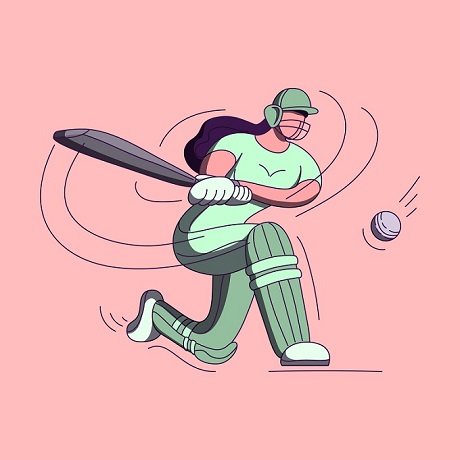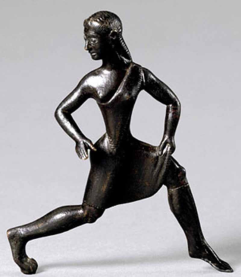With the 2025 Women’s Cricket World Cup currently underway, attention on women’s cricket is likely to peak again among the participating nations and beyond. The popularity of the women’s game seems to be going from strength to strength. But for every elite player, there are thousands of women and girls striving for opportunities to play the game at grassroots level. This article, originally published in 2020, looks at the challenges and opportunities that continue to shape the experiences of women and girls seeking to make their way in youth and recreational cricket. While some details have moved on, such as the increased funding and player population of girls cricket, many of the issues remain just as pressing today.
The summer of 2020 was due to be a big one for domestic cricket. Everything was set for cricket’s new summer tournament – called ‘The Hundred’ – to be launched, promising to refresh the game and deliver it to a wider, more family orientated audience. However, because of the impact of the Coronavirus outbreak, the tournament has now been postponed until 2021.
One of the features of The Hundred is its novel approach to gender equity. Billed as both a men’s and women’s tournament, each of the 8 city-based clubs have a male and a female team. The prize money on offer is the same for both tournaments. The women’s competition is scheduled to run alongside the men’s, sometimes using the same venues including several ‘double header’ fixtures where the women’s match is be played directly before the men’s.
The Hundred: a new era for women's sport?
These tournament arrangements help endorse the view that The Hundred is a watershed moment for women’s sport, the pinnacle of an impressive rise in popular interest, media coverage and investment in recent years. In July 2019, for example, 11.7 million people in the UK watched the Women’s Football World Cup semi-final between England and USA, beaten that year only by the 12.8 million who tuned in to the Men’s Rugby Union World Cup Final.
But while we see signs of the tide turning for elite women’s sport, there is much less coverage of what is happening further down the player pyramid towards the grassroots female participation. The ‘health’ of grassroots is important because a large participation base from youth level upwards increases competition and raises the standards at the elite level – producing the next superstars that will drive the sport’s popularity. So what is it like for women’s cricket teams down at the grassroots?
Tales from the grassroots

Despite some suggestions of a sport in rapid decline, at the recreational level cricket remains popular. As such, access to decent cricket facilities are in high demand, often leading to tensions about which teams get to play on which pitches. As part of a recent research project with the England and Wales Cricket Board (ECB), I interviewed a volunteer for a local women’s team who noted that finding venues for just 6 home fixtures was incredibly challenging. An informal hierarchy seemed to be in place when it came to booking fixtures – established men’s teams first, newer men’s teams next, then boy’s fixtures and only then would women’s matches be considered for scheduling. Pitches of the best quality were also heavily guarded by the traditional men’s teams – meaning the facilities offered to women’s teams were almost always the worst quality with unsuitable changing facilities.
Becoming part of the established 'club'
Most of the grassroots women’s teams are connected in some way to an existing men’s cricket club. People I spoke to from such clubs often referred to the difficulties that women’s teams faced integrating into the wider club that they were notionally part of. One County Development Officer, responsible for supporting several local clubs highlighted this point:
I’m not convinced that … the cricket club see all of their teams as one club, I think they see themselves as a men and junior section, with a women’s cricket team that play at their ground. They don’t resource anything together, they don’t share facilities, they don’t prioritise things in the same way.
While recently grassroots cricket clubs have been encouraged to set up women’s sections – often in light of the overwhelming popularity of youth cricket among girls – this has often been at the request of the National ECB rather than from existing clubs themselves. This seems to lead to a lack of sustained commitment locally to include women’s teams into club structures.
Increasing support for the women's game
At the grassroots, the men’s game survives largely because of long-standing sources of local financial backing and a significant volunteer workforce that keep clubs going. Without this type of historical support, the women’s game is often starved of both finance and voluntary labour to sustain female participation. This is exacerbated by the local County support for clubs mostly funded directly by the ECB, as one local ECB employee stated:
… you would be safe to say that probably only about 5% of their [development officer’s] time would be dedicated to the women’s game.
Without this intense support and mature club/league infrastructure, the opportunities for women to play cricket remain very limited. Despite the large numbers of girls who play youth cricket into the adult game, too few existing women’s teams mean not enough competitions/leagues leading to only a handful of fixtures taking place, often being played by teams that are large distances apart. It is not a particularly attractive prospect for prospective players.
Diversifying the decision makers
Perhaps one of the reasons why women’s grassroots cricket faces so many struggles to claim a stake in the local game is because it remains a heavily protected masculine space – effectively run by men for other men to enjoy. The recent success of the elite women’s England cricket team is starting to change attitudes about women’s cricket, and that there are increasing numbers of vocal ‘champions’ for women’s cricket locally. Those in positions of power and in key decision-making roles in grassroots cricket are overwhelmingly male, however, and, in the vast majority of cases, they represent the interests of the traditional, long-standing men’s game. This power base needs urgently diversifying to include more women (and people from other under-represented groups such as ethnic minorities and disabled people) to ensure the interests of a wider participant base are considered.
Certainly, when The Hundred tournament does eventually take place, it will be interesting to see whether the new-found exposure and coverage of female cricketers will begin to change some attitudes at the grassroots – and perhaps some of the grassroots funding decisions made by the ECB. If The Hundred helps to prompt such changes – and grassroots men’s and women’s teams are given the same kind of parity as in this flagship tournament – then it certainly will be viewed by many as a watershed moment for women’s sport.
Explore more articles in this collection of Women in sport.








Rate and Review
Rate this article
Review this article
Log into OpenLearn to leave reviews and join in the conversation.
Article reviews